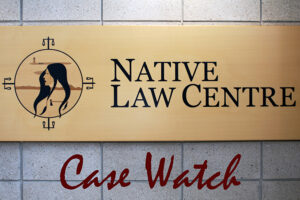Indigenous peoples’ claims require flexibility in order to be fairly adjudicated, but that is not a blanket admissibility of evidence. As with oral history, proving colonial documents has similar difficulties and should only be submitted following an assessment of their reliability.
The plaintiffs seek declarations related to Aboriginal title to lands along the south shore of Lulu Island in the City of Richmond. They also claim fishing rights as the Cowichan people had a semi-permanent fishing village called Tl’uqtinus along the south arm of the Fraser River. There is heavy reliance on oral history and hearsay evidence contained in thousands of historical documents and on expert evidence to provide an opinion on the nature and character of the occupation by the Cowichan peoples in the past.
The plaintiffs submit that the defendants improperly objected to the admissibility of the documents. They submit that all of the documents should be admissible for the prima facie truth of their contents, leaving the question of reliability to be considered when assessing the ultimate weight given to the documents. The plaintiffs acknowledge that hearsay is presumptively inadmissible, however, in Aboriginal rights claims under s 35 of the Constitution Act, 1982, the rules of evidence should be broad, flexible and applied purposively to promote truth finding and fairness for plaintiffs faced with having to prove facts across a gulf of centuries (Mitchell v MNR, [2001] 3 CNLR 122 [“Mitchell”]).
Admitting a document into evidence for prima facie truth of its contents does not bind the court to the contents of the document. In some circumstances, however, hearsay evidence presents minimal dangers and its exclusion, rather than its admission, would impede accurate fact finding (R v Khelawon, 2006 SCC 57 [“Khelawon”]). To address this, there have been common law exceptions to the rule against hearsay and the Supreme Court of Canada [“SCC”] developed the principled approach employing a more flexible, case-by-case approach to assessing admissibility. Under this principled approach, hearsay can be admitted if the party tendering it establishes on a balance of probabilities that the twin criteria of necessity and threshold reliability are satisfied (Khelawon). The trial judge acts as a gatekeeper to protect trial fairness and the integrity of the truth-seeking process by protecting against the admission of unreliable evidence (R v Bradshaw, 2017 SCC 35).
In regards to hearsay in Indigenous claims, the SCC recognized the need for a flexible adaption of the traditional rules of evidence in Aboriginal claims cases, but made it clear that the rules of evidence are not to be abandoned. The flexible approach to evidence does not mandate blanket admissibility, and the threshold for reliability, while not high in Aboriginal claims cases, does continue to exist (Mitchell). Historical Aboriginal claims and rights cases have inherent evidentiary challenges. Necessity is almost automatically met given that these cases rely heavily on ancient documents and hearsay evidence of the deceased (Mitchell; Delgamuukw v British Columbia [1998] 1 CNLR 14 (SCC); Tsilhqot’in Nation v British Columbia, 2014 SCC 44).
That assessment may be fairly automatic if the document falls within certain categories, such as public documents, or official communications between persons responsible for stewardship of government. The court can rely on the evidence of experts to provide it with the information necessary to conduct a reliability assessment. The fact that an expert relies on a document does not automatically establish reliability of the document for the court, but it is evidence that the expert finds the document to be reliable. Courts need the assistance of experts to evaluate and understand historical documents. One of the difficulties in this case is that no living person can be called to give eye witness evidence of what was happening in the claim area before, at the time of, and for many decades after first contact with European settlers (Tsilhqot’in Nation v British Columbia, 2004 BCSC 1237 [“Tsilhqot’in BCSC”]).
It is abundantly apparent the parties must rely on historical documents, oral history and traditions, ethnography and archaeology in the proof of their cases. The meaning of documents is not always self-evident and can only be understood in context. That is particularly true of historical documents where it cannot be properly evaluated until the court knows who wrote it, for whom it was written, and, most importantly, why it was written (Tsilhqot’in BCSC). The distinction between threshold reliability and ultimate reliability remains, and the trial judge still must act as a gatekeeper to keep the record free from unreliable hearsay and to protect the fairness and integrity of the trial.


